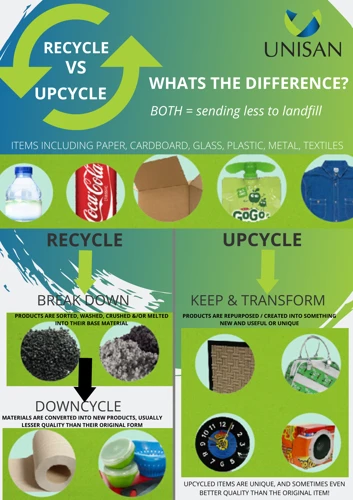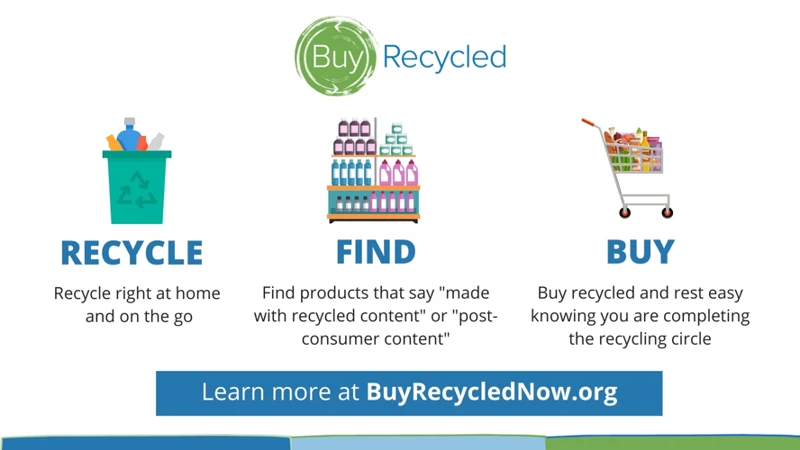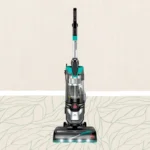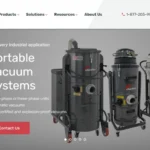As consumers, we’re always looking for ways to reduce our environmental impact. When it comes to purchasing products, the terms “recycled” and “upcycled” seem to be popping up more and more. But what’s the difference between them? And which one is better for the environment?
Recycled and upcycled products both have their own unique benefits and impacts on the environment. Understanding the difference between the two can help you make informed decisions as a consumer. In this article, we’ll explore the differences between recycled and upcycled products and their environmental impacts. So let’s dive in!
The Difference Between Recycled and Upcycled

Are you confused about the terms “recycled” and “upcycled” and what they mean? You’re not alone! Many people use these terms interchangeably, but they actually refer to different processes. Recycled and upcycled are two approaches to the same goal – to reduce waste and environmental impact. Understanding the difference between the two can help you make more informed decisions when shopping for sustainable products. In this section, we’ll explore the definitions of recycled and upcycled products and their differences. If you’re interested in eco-friendly materials, check out our guide to eco-friendly materials.
Recycled
Recycling is the process of converting waste materials into new materials and objects. The recycling process helps to reduce the amount of waste in landfills and conserves natural resources. By recycling materials, manufacturers can save on raw material costs, reduce energy consumption, and reduce greenhouse gas emissions. But what are the benefits of using recycled products?
One of the biggest benefits of recycled products is that they help to conserve natural resources. When materials are recycled, there is less of a need to extract new raw materials from the earth. This can help to reduce the environmental impact of mining and other extraction processes. Additionally, the production of recycled materials uses less energy than the production of new materials, which can help to reduce greenhouse gas emissions.
Another benefit of using recycled products is that it helps to reduce waste in landfills. Landfills can take up a lot of space and can also create problems with air and water pollution. By using recycled products, we can reduce the amount of waste that ends up in landfills, which can help to reduce pollution and conserve space.
One example of a commonly recycled material is plastic. By recycling plastic, we can help to reduce the amount of plastic waste in the environment. According to a report by the Ellen MacArthur Foundation, if current trends continue, there will be more plastic in the ocean than fish by 2050. Using recycled plastic can help to reduce this problem and conserve marine life.
However, it is important to note that recycling is not a perfect solution. Recycled materials can still have environmental impacts, such as the energy used to transport and process the materials. Additionally, not all materials can be easily recycled, and some may require special processes to be recycled properly.
One way to reduce the impact of recycled products is to use them in conjunction with eco-friendly practices, such as using eco-friendly vacuum cleaners and choosing products made from bio-plastics. Future development of eco-materials in vacuuming industry can also have a positive impact on the environment.
Upcycled
Upcycling is the process of taking an old or discarded item and turning it into something new and useful. Unlike recycling, which often requires breaking down materials into raw components, upcycling usually involves creative repurposing. This clever approach to waste reduction has become increasingly popular over the last few years, and for good reason. Upcycling offers a myriad of benefits, including:
| Benefits of Upcycled Products |
|---|
| Giving new life to old materials that might otherwise end up in landfills |
| Reducing the demand for new materials and the energy required to manufacture them |
| Encouraging creativity and innovation in design |
| Creating unique and often one-of-a-kind products with character and personality |
| Providing an opportunity for individuals and small businesses to participate in sustainable practices |
One great example of upcycling in action is the use of old vacuum cleaner parts in the creation of new products. Instead of simply tossing out broken vacuums or vacuum bags, these items can be upcycled into something new and useful. For example, a DIY enthusiast might use old vacuum parts to create a unique piece of wall art, while an eco-conscious designer might incorporate repurposed vacuum bags into a line of upcycled handbags.
If you’re looking for a vacuum cleaner that aligns with your commitment to sustainability and waste reduction, you might consider choosing an eco-friendly or bio-based option. These types of vacuums are designed to minimize environmental impact and are often made with recycled or upcycled materials. For more information on eco-friendly vacuum cleaners, check out our article on the top 5 eco materials for vacuum cleaners, or learn about the benefits of using biodegradable vacuum bags in our article on bio vacuum bags.
Benefits of Recycled and Upcycled Products

When it comes to making environmentally conscious choices, opting for recycled or upcycled products can have significant benefits for both the planet and your wallet. These products not only contribute to reducing waste but also have several advantages that make them a more sustainable choice. From a lower carbon footprint to creating job opportunities and supporting local businesses, the benefits of recycled and upcycled products are numerous. Let’s explore them further below.
Recycled Products
When it comes to recycled products, there are many benefits to both the environment and to society as a whole. Here are just a few examples:
- Reduces waste: By using materials that have already been produced, recycled products help reduce the amount of waste that goes into landfills or oceans. This is especially important given the current state of our planet.
- Saves resources: The production of recycled products often requires less energy and resources than producing new products from scratch. For example, recycling aluminum uses 95% less energy than producing it anew.
- Creates jobs: The recycling industry creates jobs in areas such as collection, sorting, and processing. This can help boost local economies and provide employment opportunities for people in need.
- Encourages sustainability: By supporting recycled products, consumers can send a message to companies that they value sustainability and environmental stewardship. This can in turn encourage companies to prioritize these values in their business practices.
Choosing recycled products over new ones is a simple but effective way to reduce our impact on the environment and promote a more sustainable future. If you’re interested in learning more about eco-friendly products, check out our article on the top 5 eco-friendly materials for vacuum cleaners.
Upcycled Products
Upcycling is a creative way to reuse materials that might end up in the landfill. Upcycled products are not just environmentally friendly, but they can also be aesthetically pleasing and unique. Here are a few benefits of upcycling:
1. Reduction in Waste: Upcycling helps to reduce waste by repurposing materials that might otherwise end up in a landfill. By giving new life to an existing item, upcycling helps to minimize waste and significantly reduce the consumption of new resources.
2. Unique Products: The beauty of upcycling is that it brings out the creativity in people. Instead of purchasing mass-produced items, you get unique pieces that have a story behind them. No two upcycled products are alike, making them an exciting addition to any collection.
3. Cost-Effective: Upcycling can be a cost-effective option. Instead of buying new products, you can repurpose what you already have. It can also be an excellent opportunity for DIY enthusiasts who are willing to put in the time and effort as they can create something they can use for a fraction of the cost.
4. Preservation of Resources: Upcycling preserves resources such as water and energy, which is essential for sustainability. It is a way to use fewer resources and be more mindful of the planet.
5. Inspires Creativity: Upcycling is not just about preserving resources and reducing waste. It is also an opportunity to unleash creativity. Upcycling challenges us to find a new purpose for the items that we would otherwise discard. Thus, it’s a great way to explore your creative side while making a positive impact on the environment.
Conclusion: Upcycling has numerous benefits, and it’s a great way to contribute to the environment positively. It’s not just about giving new life to old products, but it’s a way to think outside the box and look at things differently. Through upcycling, we can use our creativity, protect the environment, and create something unique that will last for a long time.
Environmental Impact of Recycled and Upcycled Products
As consumers, we all carry a responsibility to make conscious decisions in our daily lives that contribute to a more sustainable future. When it comes to purchasing products, opting for those that are eco-friendly can have a significant impact on the environment. In this section, we will explore and compare the environmental impact of two popular sustainable methods: recycling and upcycling. Through this analysis, we will discover which practice boasts a more positive impact on the environment, so that we can make informed decisions for the benefit of our planet.
Recycled Products
Recycling is a process of converting waste materials into new products, and recycled products come in various forms. The benefits of recycled products are numerous, especially when it comes to the environment. Here are some reasons why recycled products are a great eco-friendly option:
- Reduction of Waste: Recycling products helps reduce the amount of waste that ends up in landfills, which can harm the environment and wildlife. By recycling materials such as paper, plastic, and metal, we can conserve the Earth’s natural resources and minimize the amount of waste that goes into landfills.
- Energy Conservation: Producing new products requires a lot of energy, which in turn produces greenhouse gases that contribute to climate change. Recycling products conserves energy by using fewer raw materials and less energy to produce recycled products.
- Land Preservation: By recycling, we can preserve natural habitats and reduce the need for new landfills, which often have a detrimental impact on wildlife and the environment.
- Water Conservation: Recycling products conserves water since the process uses less water than producing new products. Water is a finite resource, and conserving it is essential to prevent water shortages and maintain the health of our ecosystems.
Recycled products can help reduce waste, conserve energy and natural resources, preserve land, and conserve water. By using recycled products, we can contribute to a healthier and more sustainable future for the planet.
Upcycled Products
Upcycling is a process that transforms waste materials or old products into something new and valuable, rather than simply disposing of them. Here are some of the benefits of upcycled products:
- Reduces Waste: Upcycling helps to reduce the amount of waste that ends up in landfills. By repurposing old items, materials are given a second life and are kept out of the landfill. This, in turn, helps to reduce the environmental impact of waste disposal.
- Energy-efficient: Upcycling requires less energy than recycling since no additional processing is required to break down materials. The energy required to recycle products is often higher than the energy needed to upcycle them.
- Supports Creativity: Upcycling encourages creativity and innovation. Rather than relying on traditional manufacturing methods, upcycling requires creativity and resourcefulness to make something new out of old materials. This can lead to unique and one-of-a-kind products.
- Saves Resources: Upcycling helps to conserve natural resources since fewer new materials are needed to create new products. By using existing materials, upcycling reduces the demand for new raw materials and reduces environmental damage caused by resource extraction.
- Cost-effective: Upcycling is often more cost-effective than recycling or traditional manufacturing. Since upcycling relies on existing materials, the cost of acquiring new materials is reduced or eliminated altogether. This makes upcycling a more sustainable and affordable option than traditional manufacturing.
Upcycling is an eco-friendly and creative way to repurpose waste materials and reduce waste. By transforming old items into something new and useful, we can reduce our environmental impact and create unique and one-of-a-kind products that are both sustainable and aesthetically pleasing.
Conclusion
After exploring the differences between recycled and upcycled products, as well as their benefits and environmental impacts, it can be concluded that both approaches have their own advantages.
Recycling is an essential process that converts waste and used materials into new products, which helps to reduce the number of resources needed to produce new items. By recycling, we can conserve natural resources and reduce the amount of waste sent to landfills. However, recycling does require a significant amount of energy and resources, and not all products are recyclable. It is important to carefully dispose of items that cannot be recycled properly to avoid any negative environmental impacts.
Upcycling, on the other hand, is a creative and innovative way to reuse materials that might have otherwise been considered waste. Upcycling not only reduces waste but encourages creativity in finding imaginative ways of repurposing materials. It also creates unique products and adds value to items that might have otherwise been considered worthless. However, upcycling cannot replace recycling, and not all waste can be upcycled. Additionally, upcycling requires significant creativity and time, which may not be feasible for everyone.
In conclusion, both recycling and upcycling have their own positive impacts on the environment, and it’s important to choose the best approach depending on each situation. It’s vital to remember that reducing our consumption of products and waste is the best approach to protect our environment. By managing our waste properly, we can minimize our environmental footprint and preserve our planet for future generations.
Frequently Asked Questions
What is recycling?
Recycling is the process of transforming waste materials into new materials to prevent them from being discarded in landfills or incinerated.
What is upcycling?
Upcycling is the process of transforming waste materials into a product of higher value, quality or usefulness.
What is the difference between recycling and upcycling?
The main difference between recycling and upcycling is that recycling usually involves breaking down materials into their raw forms to make something new, while upcycling takes waste materials and transforms them into something better without breaking down the materials.
What materials can be recycled?
Many materials can be recycled, including paper, cardboard, plastic, glass, metal, and electronics.
What are the benefits of recycled products?
Recycling helps conserve natural resources, reduces landfill waste, and decreases energy consumption and greenhouse gas emissions.
What are the benefits of upcycled products?
Upcycling helps reduce waste and landfill space, saves energy and resources, and creates unique, creative and often one-of-a-kind items.
How does recycling impact the environment?
Recycling reduces the amount of waste sent to landfills and the amount of new products that need to be made from raw materials, conserving natural resources and reducing pollution and greenhouse gas emissions.
How does upcycling impact the environment?
Upcycling reduces the amount of waste sent to landfills and the amount of new products that need to be made from raw materials, conserving natural resources and reducing pollution and greenhouse gas emissions. It also encourages creativity and innovative thinking.
What are some common misconceptions about recycling and upcycling?
Some common misconceptions are that recycling is always better than throwing things away, and that upcycling is just a trendy buzzword without any real impact. However, both practices have significant environmental benefits when done correctly.
How can individuals participate in recycling and upcycling?
Individuals can participate in recycling and upcycling by properly separating materials for recycling, purchasing products made from recycled or upcycled materials, and by upcycling items in their own homes through various DIY projects.








